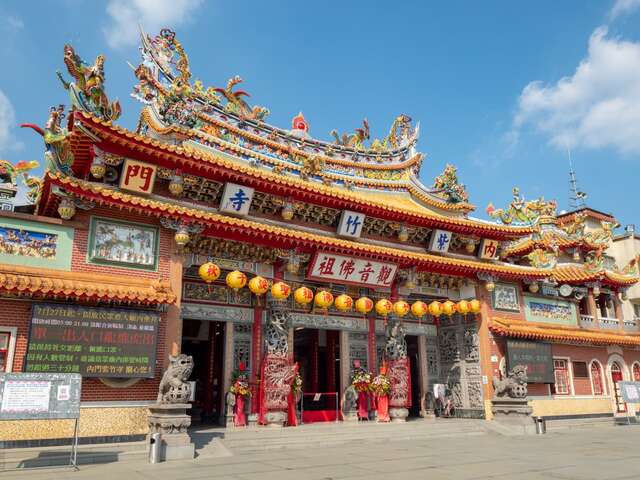Neimen Zhuzhu Temple Introduction
The Neimen Purple Bamboo Temple, with a history of over 300 years, was originally just a protective deity for the Guo family. Due to a legendary story of the Bodhisattva Guanyin's miraculous appearances, the local community came together to build the temple. Its divine reputation spread throughout Taiwan, attracting numerous believers. Over the years, the temple has undergone multiple renovations and has become the most historically significant and largest "Guanyin Temple" in the province. The Neimen Purple Bamboo Temple is not only the religious center of the Neimen District but also an important temple for devotees across Taiwan to pray for blessings. The main celebrations take place on the 19th day of the second, sixth, and ninth months of the lunar calendar, which marks Guanyin's birthday, enlightenment, and monastic ordination, respectively. These grand festivals attract a massive crowd of worshippers, transforming the usually tranquil Neimen area into a bustling scene. Surrounded by lush greenery, featuring small bridges, flowing water, and pavilions, the artificial spring water from the lotus flower clock often captivates tourists. The historical evolution of Neimen Purple Bamboo Temple dates back to the Kangxi period of the Qing Dynasty when the Guo family immigrated to Taiwan and settled on Fanzi Road in the southern corner. One day, the incense burner dedicated to Guanyin repeatedly flew out by itself and landed on a guava tree branch at the current location of the Purple Bamboo Temple. This site is believed to be located at a "lotus hole" according to feng shui, and the locals regarded it as a miracle. Consequently, the community decided to establish a temple here to worship Guanyin. Subsequently, various miraculous events have been reported, leading the residents to be very devout towards this temple, resulting in a vigorous incense offering that has persisted to this day, showcasing a spectacular scene. The temple predominantly worships Guanyin. During the Qianlong period, the naval governor passing through this area noticed the robust incense offerings, considering it an extraordinary sight. He then knelt down and worshipped inside, leading to the inscription "Purple Bamboo Brings Spring," which formally named the temple as the Purple Bamboo Temple, with the plaque currently well preserved within the temple. Neimen Nanhai Purple Bamboo Temple - Songjiang Battle Array Kaohsiung's Neimen District is renowned as the hometown of folk arts, boasting the largest number of traditional folk performance troupes in the country. The most famous among them is the Neimen Songjiang Battle Array, originating from the Luo Han Men ceremony accompanying Guanyin’s procession. This tradition has a history of over 200 years and has been listed as one of Taiwan's Hundred Religious Wonders. Each year, performances rotate between the courtyards of Neimen Purple Bamboo Temple, Shunxian Temple, and Nanhai Purple Bamboo Temple.































